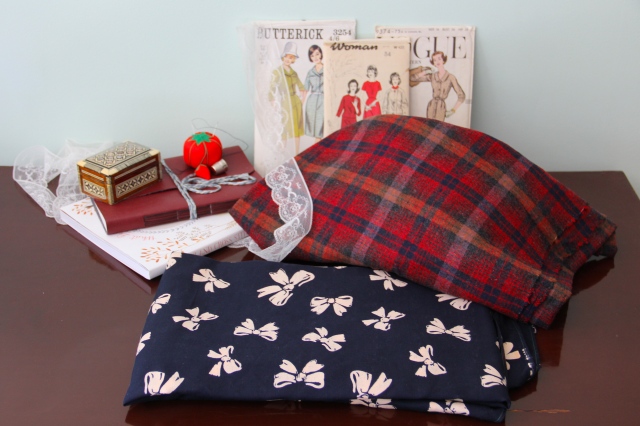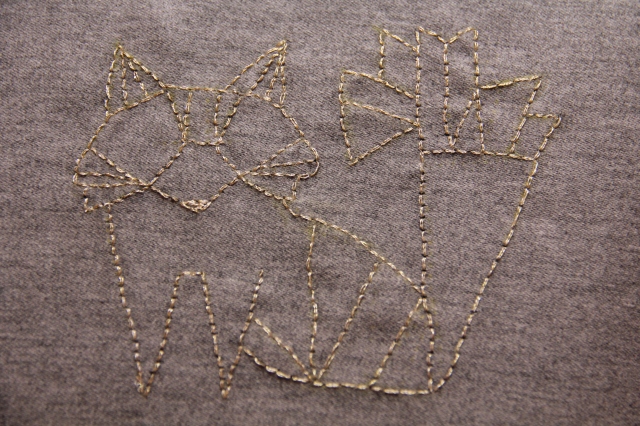When I first thought about learning to sew and make my own clothes, my mother gave me a brilliant present: a new sewing box with lots of useful bits and bobs inside including machine and hand sewing needles, a variety of pins, a spongey pincushion, good fabric scissors, tailor’s chalk (the sort that comes in a hard little square) and a measuring tape. This kit was a great toolbox for a new sewer starting out and I didn’t really think about adding any other implements or accessories for quite some time.
More recently, through reading different sewing blogs and books, I’ve come across suggestions for other sewing tools which I had initially dismissed as not being of particular use to a beginner. There are so many sewing-related gadgets and tools out there that it’s really hard for beginners to figure out what’s worth picking up and what’s an unnecessary expense. I soon discovered that I had really underestimated the usefulness of five of these in particular, and thought I’d share them in case you might be in the same boat in terms of keeping sewing costs down and limiting your sewing gadgetry.
1. Wax for hand sewing
It is almost ridiculous just how useful this has been for me in preventing thread from tangling up while hand sewing waistbands and bindings, or even just quickly basting two pieces of fabric together. A very simple, but very effective, tool for your kit which should be stocked in your local sewing store.
2. A really good marking pen
I used to rely solely on the standard square tailor’s chalk that came in my sewing box gift, but I found it hard to make accurate markings with it because the edges became dull so quickly and yet the chalk wasn’t soft enough to make a nice clear mark.
My husband bought me a chalk pen set at Joanne’s (it’s the red pen above) for Christmas last year. The pen came with a set of over a dozen white and multicoloured replacement nibs as well as a sharpener for replenishing the point. The chalk is good enough quality to mark any of the fabrics I’ve used it on, from wovens through knits, but rubs off really easily and hasn’t left any stains. I can’t tell you how much time and frustration this one pen has saved me!
3. Tailor’s ham
I held off on sourcing one of these for ages, mistakenly believing they were really only useful when inserting sleeves. Nope – the tailor’s ham comes in handy for pressing all sorts of shapes and seams. Pressing seams properly makes such a huge difference to how ‘finished’ a garment looks – and once the item is made up, there’s no going back in there to smooth things out!
4. Bias binding makers
One sewing task I always put off tackling is making matching bias binding. It’s not that hard – just a bit dull! I bought these three Hemline bias binding makers which definitely make the task a lot easier. They’re really not essential for making binding – you can certainly make it just fine using a few pins, a measuring tape and a good iron – but they really speed up the process. The one I use most is the 1″ binding one, but the other two do come in useful.
5. A rotary cutter
I have a really good pair of fabric scissors and so for a long time I thought they would see me through just fine. However, I had a lot of difficulty in trying to cut lighter fabrics with any kind of accuracy using the scissors: the fabric kept slipping and shifting around when lifted for the scissors. I sourced my rotary cutter on eBay and bought a self-healing cutting mat at a local art supply store and have found them particularly useful for cutting knits (so quick and no stretching out of shape!) and very lightweight fabric. And the rotary cutter is especially useful when cutting fabric strips for binding!
So what simple, but brilliantly useful, inexpensive sewing tools do you turn to time and again? What else have I been missing out on all this time??


























